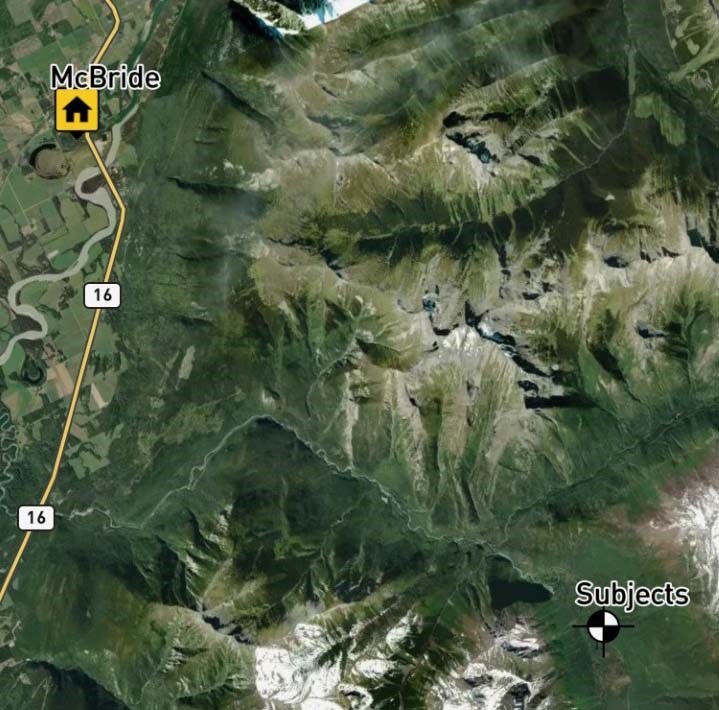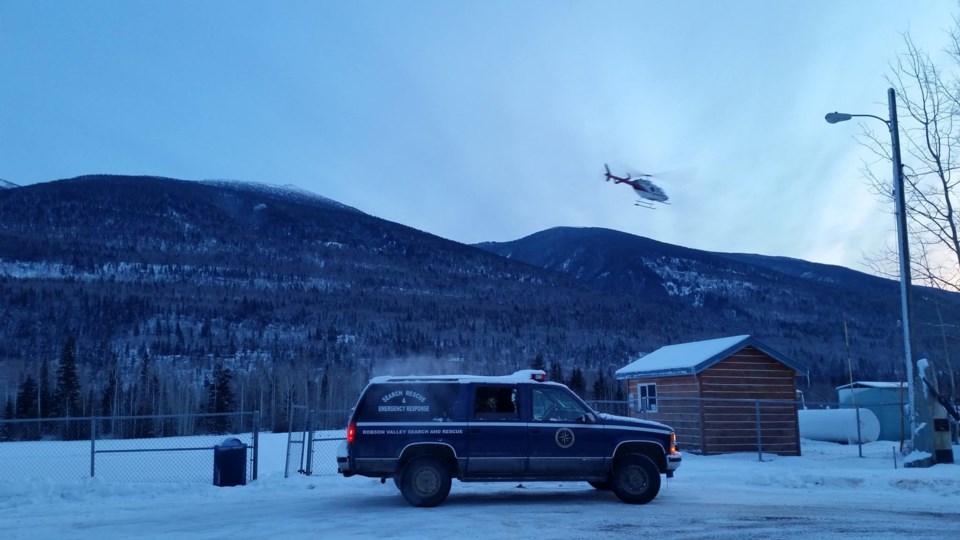The first use of the new Apple Emergency SOS via satellite in B.C. may have saved the lives of two women who were stranded in the wilderness near McBride.
Apple Emergency SOS is a feature available with the iPhone 14 that allows users to connect with emergency services via satellite, so it can be used without WiFi or cellular service.
Luckily one of the two women had the iPhone 14, when the pair got lost on their trip back to Alberta on Dec. 23.
An accident had closed the highway so the women checked Google Maps for an alternate route and decided to take a detour through the Holmes Forest Service Road.
The road was partially plowed, as it had been plowed the previous week, and the women made to where the grader had stopped.
“Then it was basically a wall of snow and when they tried to get through it, they got stuck,” explained Dwight Yochim, senior manager with BC Search and Rescue.
He said they were approximately 20 kilometres down the road, stuck in the snow with no one knowing where they were and no cell service.
“There's no cell service there but one of them happened to have the new Apple phone that has the SOS in it and activated the SOS and to my knowledge, that's the first use of the SOS in British Columbia.”
Yochim explained that once the iPhone user activates the SOS, it sends a message to an Apple call centre who then contact Northern 911 which is a call centre in Canada. Northern 911 then activates a call to emergency services in British Columbia with a packet of information that includes the subject’s GPS location.
RCMP and Robson Valley Search and Rescue were then able to use the GPS location to strategize and understand the possibilities of what might have happened and speculated the women may have gone up the logging road.
“They found them, pulled their vehicle out and got them turned around and back on the way,” said Yochim. “It's the kind of thing that it potentially may have saved their life.”
Yochim said without this technology the process of finding them could have been an epic search that may have lasted over a week.
“If they didn't have this, what would have happened is eventually the family or their work would have said ‘hey, they didn't show up’ and so the search area would have been from wherever they were last seen to where they're supposed to be, and that could have been several hundred kilometres.”
He said the search to find these two ladies who mysteriously disappeared would have involved a number of teams from both provinces.
“This is a game changer,” said Yochim. “They were able to activate the SOS reduced the search to a an exact location of where they were, so there was no search, and team actually drove in right to where they were and managed to save them.”
Yochim said BCSAR has been in contact with Apple and will be conducting webinars for SAR managers and grassroots team leaders, so everyone knows what to expect with this new technology.
He said BCSAR does about 1,700 to 1,800 searches a year and estimates that may be 3,000 by 2035 and a majority of their time and resources are spent actually searching.
“If we know exactly where the subject is, then all we have to do is go in and rescue them,” said Yochim.
“This technology has the potential of really helping us save lives and reducing the amount of time it takes to do that.”
Despite improvements in technology, Yochim noted that it’s always important to leave a trip plan, tell people exactly where you’re going, who you will be with and what route you will be taking.




